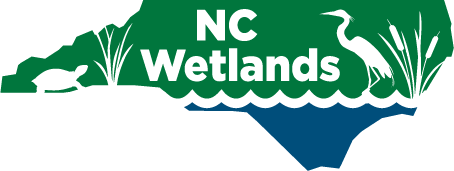Major Findings
Amphibians and macroinvertebrates are reliable indicators of aquatic environmental health and serve a vital role as the link between a productive plant community and economically important animals (e.g., fish and birds). NC Division of Water Resources and NC Wildlife Resources Commission (NC WRC) undertook a 3-year project to better understand wetland-dependent amphibian and macroinvertebrate communities in natural and restored wetlands, to improve mitigation design and restoration practices to benefit these animal communities.
Sixteen (16) wetlands were selected for study in the Coastal Plain and Sand Hills regions of North Carolina. Four groups of wetlands were studied: natural closed canopy wetlands (4), re-established wetlands (4), natural open canopy wetlands (4), and enhanced wetlands (4). Re-establishment sites were wetlands that had been historically drained for silviculture or agriculture, and were restored for mitigation credit by restoring hydrology and replanting wetland tree species to re-establish the wetlands. Enhancement sites were wetlands on lands under public land management that were enhanced by the NC WRC to improve aquatic animal habitat, not for mitigation credit. These enhancement sites were historically open-canopy systems, but fire suppression resulted in invasion by trees, so enhancement involved removal of those trees.
Amphibian sampling was done through dipnetting, visual surveys, and call recordings, while a variety of macroinvertebrate sweeps and bucket samples were collected. From all sites combined, a total of 30,033 individual macroinvertebrates were identified by experts, representing 304 distinct taxa. A total of 23 amphibian taxa were detected.
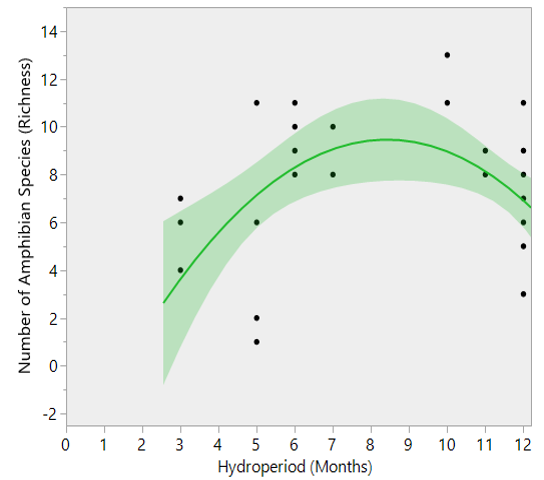
Non-permanent water is related to a high number of amphibian species.
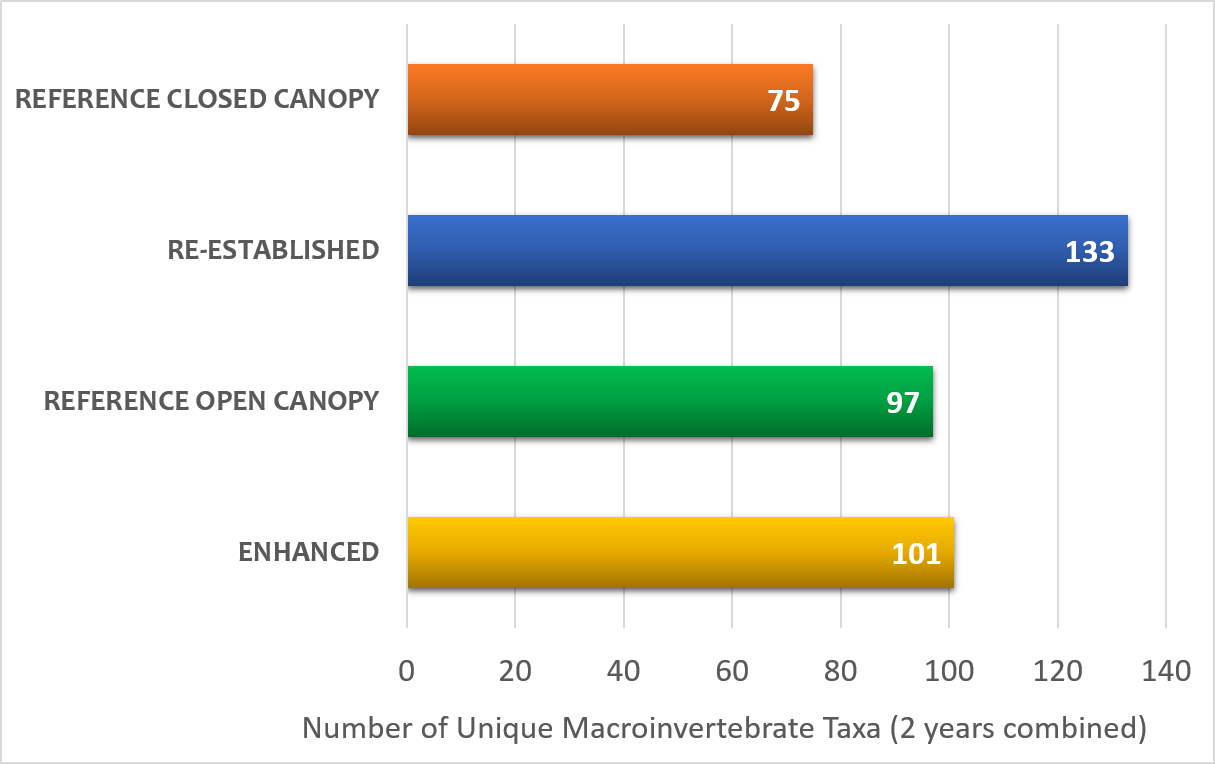
Re-established wetlands had the highest number of total unique macroinvertebrate taxa due to permanent water. Open canopy wetlands were also important for macroinvertebrates.
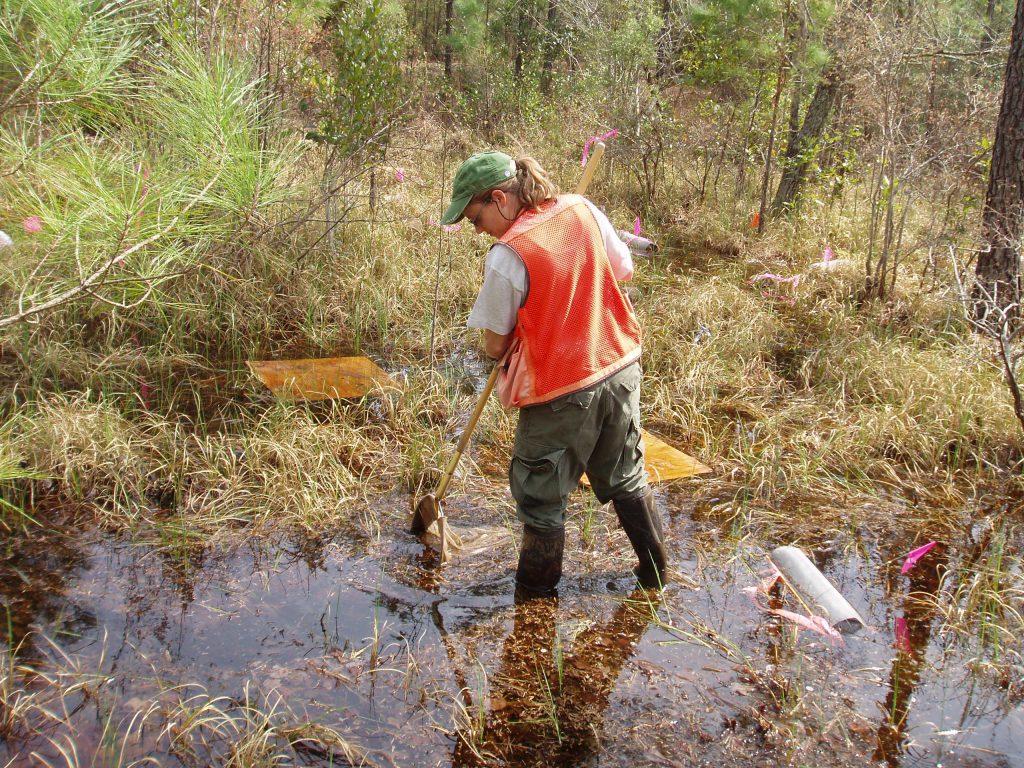
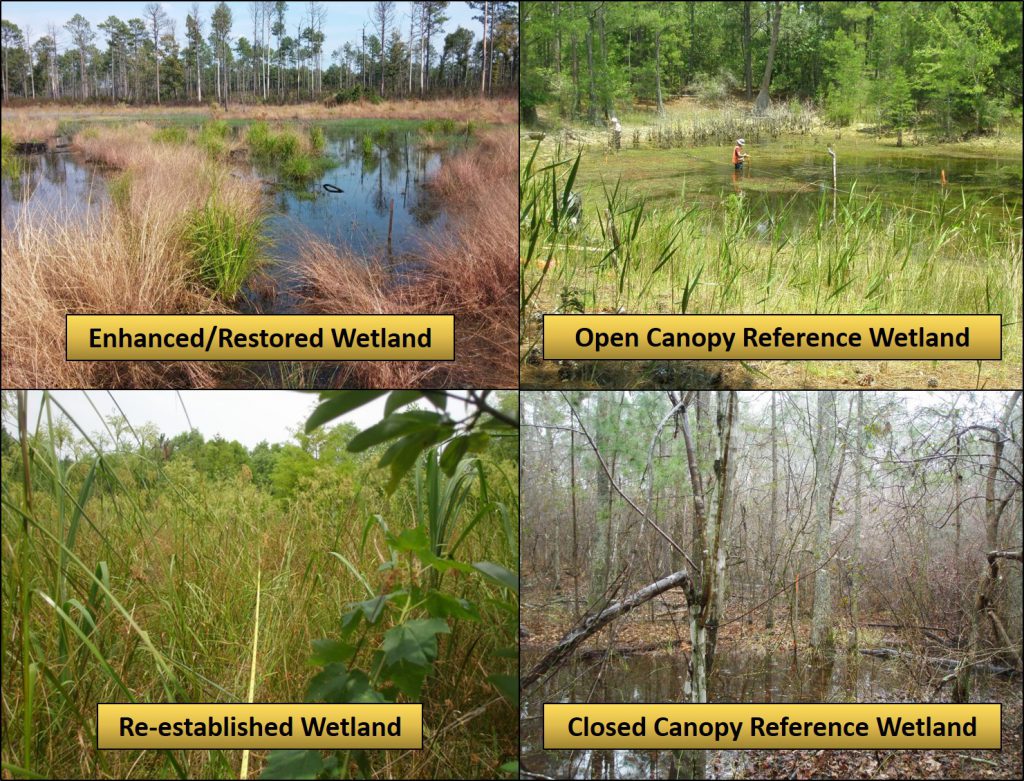
Hydrology wells were installed in 16 wetlands and hourly water levels were monitored for 3 years. Vegetation general structure information was collected for buffers and within wetlands. Basic water quality parameters were measured using hand-held meters for pH, specific conductivity, and temperature. The Ohio Rapid Assessment Method (ORAM) was used for evaluating overall wetland habitat quality, and the NC Wetland Assessment Method (NCWAM) was used for evaluating wetland functions.
We found that wetlands restored through re-establishment of hydrology and vegetation contained greater numbers of amphibian and macroinvertebrate taxa than closed canopy reference wetlands. These re-establishment sites generally had permanent water, whereas most of the closed canopy reference sites dried out during the study. As a result of permanent water, re-established wetlands also contained macroinvertebrate taxa (mayflies and molluscs) not found in other wetland types. The re-established wetlands were still in transition between open canopy and closed canopy systems and may decrease in amphibian and macroinvertebrate diversity as they mature. Wetlands that were enhanced by removal of canopy trees from historically open wetlands were successful in reaching amphibian and macroinvertebrate utilization comparable to that in open canopy reference sites.
Open canopy wetlands (reference and enhanced sites) provided better quality habitat for macroinvertebrates and amphibians than closed canopy reference or re-establishment sites. Our findings indicated that the highest ranked wetland sites for macroinvertebrates and amphibians were open canopy marsh-type wetlands containing aquatic plants, moderate cover by emergent vegetation, very few large trees, and no fish. Dissolved oxygen was high and specific conductivity was low in these wetlands. Closed canopy (forested) wetlands were not as heavily utilized by amphibians or macroinvertebrates as the open canopy systems. The two state-listed threatened species found in this study (tiger salamander [Ambystoma tigrinum] and Carolina gopher frog [Rana capito]) were only found on open canopy wetlands. To improve habitat potential for aquatic biota on mitigation sites, mitigation design should incorporate a mosaic of habitat types that includes open canopy marsh areas disconnected from permanent water to maintain seasonally drying, fish-free habitats which are essential for wetland dependent animals.
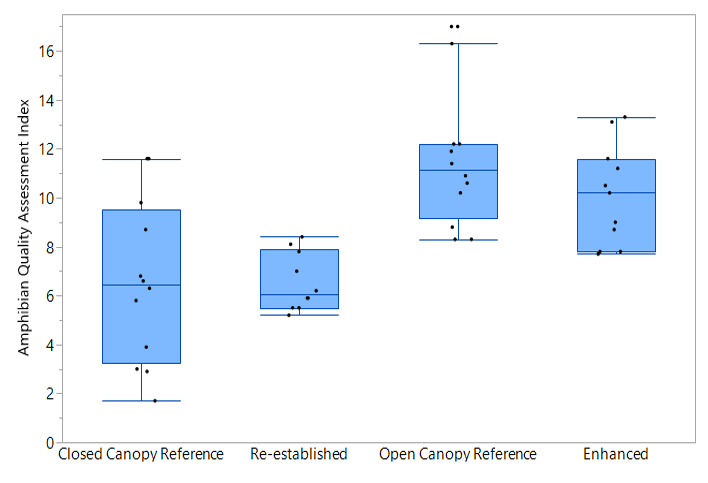
Open canopy and enhanced wetlands had the highest quality amphibian communities
This project was funded by a grant from the US Environmental Protection Agency (CD-00D01512) and matching funds from the NC Department of Environmental Quality.

